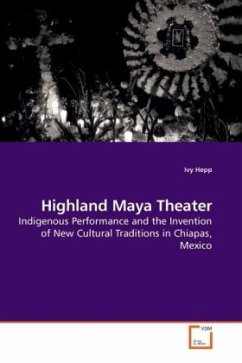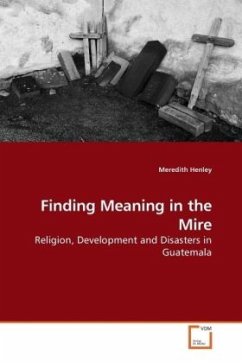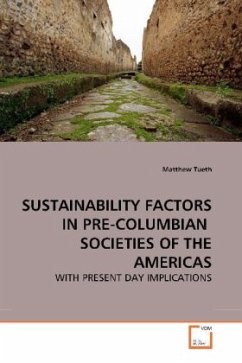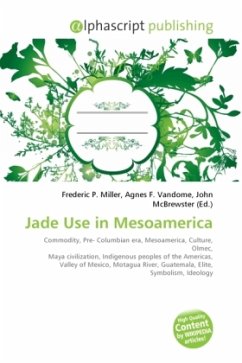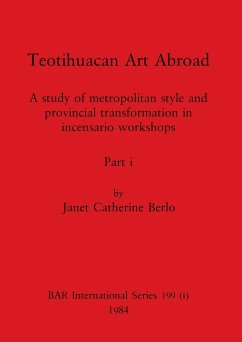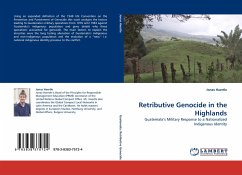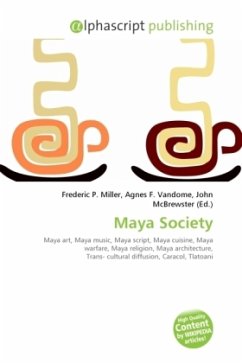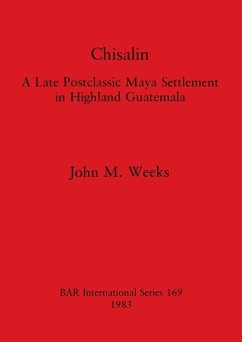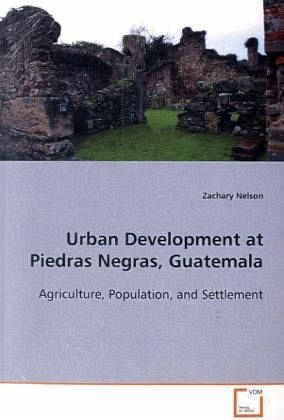
Urban Development at Piedras Negras, Guatemala
Agriculture, Population, and Settlement
Versandkostenfrei!
Versandfertig in 6-10 Tagen
52,99 €
inkl. MwSt.

PAYBACK Punkte
26 °P sammeln!
This monograph examines the relationship betweensettlement and population at Piedras Negras,Guatemala. This Classic Maya center developed from asmall village into a major polity over the course ofa thousand years. Excavations from within the siteconducted by the University of Pennsylvania(1931-1937) and the Projecto Piedras Negras(1997-2000, 2004) have greatly expanded our knowledgeof the center and its surrounding areas. A model of population change and center developmentcan be derived from the information collected viaexcavations. Epicentral Piedras Negras had a very lowpopulation during mos...
This monograph examines the relationship between
settlement and population at Piedras Negras,
Guatemala. This Classic Maya center developed from a
small village into a major polity over the course of
a thousand years. Excavations from within the site
conducted by the University of Pennsylvania
(1931-1937) and the Projecto Piedras Negras
(1997-2000, 2004) have greatly expanded our knowledge
of the center and its surrounding areas.
A model of population change and center development
can be derived from the information collected via
excavations. Epicentral Piedras Negras had a very low
population during most of its existence which only
peaked to a maximum of 2600 inhabitants during the
Chacalhaaz ceramic phase (AD 750-825). During this
same period, the polity of Piedras Negras had a
maximum population of 50,000 people with a density of
15 people per square kilometer. Agricultural
practices based on a medium fallow system could have
supported the inhabitants of Piedras Negras (the
center) without the use of any intensive agricultural
features due to its low population. This data driven
approach is ideal for archaeologists working in the
Maya region.
settlement and population at Piedras Negras,
Guatemala. This Classic Maya center developed from a
small village into a major polity over the course of
a thousand years. Excavations from within the site
conducted by the University of Pennsylvania
(1931-1937) and the Projecto Piedras Negras
(1997-2000, 2004) have greatly expanded our knowledge
of the center and its surrounding areas.
A model of population change and center development
can be derived from the information collected via
excavations. Epicentral Piedras Negras had a very low
population during most of its existence which only
peaked to a maximum of 2600 inhabitants during the
Chacalhaaz ceramic phase (AD 750-825). During this
same period, the polity of Piedras Negras had a
maximum population of 50,000 people with a density of
15 people per square kilometer. Agricultural
practices based on a medium fallow system could have
supported the inhabitants of Piedras Negras (the
center) without the use of any intensive agricultural
features due to its low population. This data driven
approach is ideal for archaeologists working in the
Maya region.



